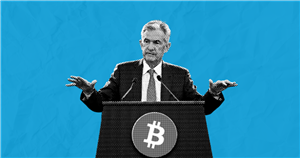Silicon Valley Bank collapse: Everything that’s happened until now
The sudden collapse of Silicon Valley Bank (SBV) has quickly unfolded over the course of three days, depegging stablecoins, leading regulators in the United States and United Kingdom to prepare emergency plans and raising fears among small businesses, venture capitalists and other depositors with funds stuck at the California tech bank.
Cointelegraph’s team compiled a roundup of the latest and major developments surrounding the troubled bank:
March 10: Silicon Valley Bank shut down by California regulator
Silicon Valley Bank (SVB) was shut down by California’s financial watchdog on March 10 after announcing a significant sale of assets and stocks aimed at raising additional capital.
The California Department of Financial Protection and Innovation confirmed that Silicon Valley Bank was ordered to close but did not specify the reason for the shutdown. The California regulator appointed the FDIC as the receiver to protect insured deposits.
The California watchdog appointed the Federal Deposit Insurance Corporation (FDIC) as the receiver to protect insured deposits. However, the FDIC only insures up to $250,000 per depositor, per institution and per ownership category. The bank held over $5 billion in funds from major venture capital firms. Silicon Valley Bank is one of the top 20 largest banks in the United States, providing banking services to crypto-friendly venture companies, such as Sequoia Capital and Andreessen Horowitz.
March 10: The world responds to the bank’s crisis
The Bank of England stated on March 10 that SVB UK will “stop making payments or accepting deposits,” as the central bank intends to apply to the court to place SVB UK into a “Bank Insolvency Procedure.”
U.S. depositors lined up to withdraw funds. According to an unconfirmed report, the FDIC was planning to cover 95% of uninsured SVB deposits, with 50% of them to be paid out in the coming week.
The bank’s downfall was swift, coming less than 48 hours after management disclosed that they needed to raise $2.25 billion in stock to shore up operations. Its stock price subsequently plunged, falling over 60% on March 9.
March 11: The crypto industry begins to feel the pain
Reports emerge of crypto industry exposure to the failed bank. Circle had $3.3 billion in SVB. A spokesperson for Circle told Cointelegraph that “While we await clarity on how the FDIC receivership of SVB will impact its depositors, Circle and USDC continue to operate normally.“
Circle’s USDC stablecoin depegged and lost over 10% of its value. The USDC (USDC) depeg led to a domino effect that knocked several stablecoins from their pegs as well. DAI (DAI), USDD and FRAX were affected. Circle announced that it would use corporate “resources” to cover the shortfall caused by the SVB collapse.
March 11: Contagion fears spread
Reverberations were felt throughout the DeFi community as whales sought to transfer funds away from USDC. DAI issuer MakerDAO issued an emergency proposal to mitigate its $3.1 billion exposure to USDC. Swapping pool Curve Finance saw record-breaking trading of $7 billion on Mach 11. Fear of contagion mounted rapidly, with regional banks seen as particularly at risk, and dire warnings were sounded. At the same time, venture capitalists and others rallied around SVB to express their willingness to continue to work with the bank, should it be purchased and recapitalized.
March 12: Regulators spring into action
Regulators in the United States and United Kingdom began to take action to deal with the SVB collapse. U.S. Treasury Secretary Janet Yellen said in an interview that the Treasury was focused on depositors’ needs and would not bail out the bank. U.K Prime Minister Rishi Sunak stated that there were “immediate plans to ensure the short-term operational and cash flow needs of Silicon Valley Bank UK customers.”
The Bank of London has made a formal bid for the U.K. branch of SVB.
Bloomberg reported that the FDIC had been conducting an auction process for SVB on the night of March 11. The Wall Street Journal reported that bidding closed at 14:00 ET March 12. Elon Musk said in a tweet that he was “open to the idea” of buying the bank. The administration of U.S. President Joe Biden is also reported to be preparing “material action.”
Source: Read Full Article



